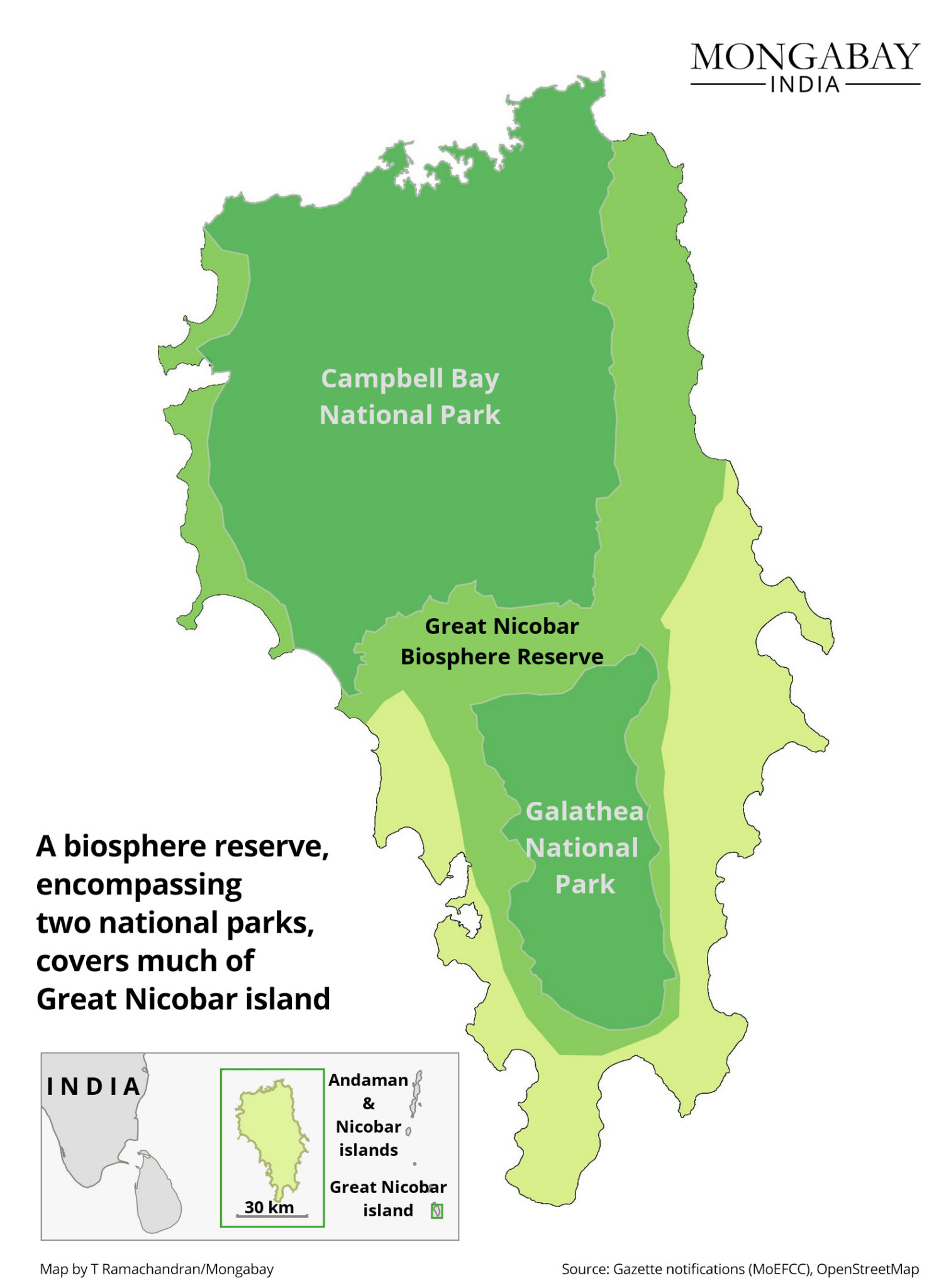900 319 0030
enquiry@shankarias.in
The Ministry of Environment, Forest and Climate Change gave environmental clearance for the ambitious Rs.72000-crore development project on the Great Nicobar Island.
The NITI Aayog has said in a report that the proposed port will allow Great Nicobar to participate in the regional and global maritime economy by becoming a major player in cargo transshipment.
Reference

The Shompen are hunter-gatherers who depend on forest and marine resources for sustenance.
The Nicobarese, who lived along the west coast of the island were mostly relocated after the 2004 tsunami.